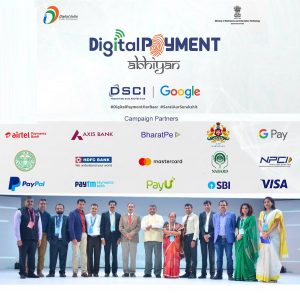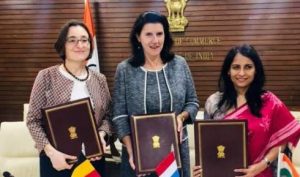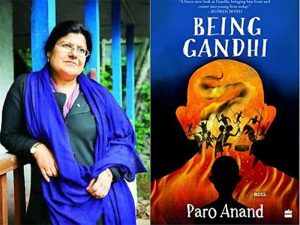Sunday, September 22, 2019
Employment News 21 September to 27 September 2019 Download pdf
VisionIAS
06:47
Download Employment News pdf of this week 21 September to 27 September 2019. Check latest job recruitment

Employment News pdf This Week - 21 September to 27 September 2019.
Hey Aspirants, its the latest for free of Employment Weekly Magazine. You can check latest job recruitment at various office/board. You can check upcoming vacancies and for this week/month. To download this employment magazine click on the link given below.
Click Here to download Employment News 21 September to 27 September 2019 – Download pdf
Click Here to Like our Facebook page for latest updates and free ebooks
Saturday, September 21, 2019
Daily Current Affairs, 21st September 2019
VisionIAS
17:53

1) International Day of Peace 21 September

•The theme for International Day of Peace 2019 is “Climate Action for Peace”. The theme draws attention to the importance of combatting climate change as a way to protect and promote peace throughout the world.
2) Delhi CM Arvind Kejriwal launched ‘champions campaign’ against dengue

3) DSCI, MeitY and Google India join hands for ‘Digital Payment Abhiyan’

•Communications and Electronics & IT Minister launched the campaign that will educate end-users on the benefits of making digital payments and urge them to adopt security and safety best practices. The campaign was launched at the Google for India event. To drive the campaign objectives and amplify outreach to users across all states, DSCI has onboarded various digital payments, ecosystem partners. These partners include representation from banking, card networks as well as a fin-tech segment.
4) 16th Session of the Joint Economic Commission between India-BLEU

•The importance of JEC between India and BLEU was reiterated & both sides negotiate cooperation on a wide range of issues of mutual interest, such as, transportation and logistics, renewable energy, aerospace and satellites, audio and visual industry, agro and food processing industry, life sciences, ICT(Information and communications technology), traditional medicine, Ayurveda and yoga, and tourism.
5) NTPC to build India’s biggest solar park in Gujarat

6) A new book titled “Being Gandhi” by Paro Anand to mark

UPSC Mains 2019 Paper GS 2 PDF Download Held in 21 Sept, 2019
VisionIAS
17:26
UPSC Mains 2019 Paper GS 2 PDF Download Held in 21 Sept, 2019
Click Here to download UPSC Mains 2019 Paper GS 2 PDF
Click Here to Like our Facebook page for latest updates and free ebooks
The HINDU Notes – 21st September 2019
VisionIAS
13:34

📰 An independent fiscal watchdog for Parliament
A Parliament Budget Office can help drive smarter, more focused debate in the media and with the electorate
•When most people arrive at the ballot box, they vote with their gut. But getting there requires absorbing and shaping months and years of conversations, long-held opinions and ideally, hard facts and evidence.
•What is then important for our electorate and the representatives we vote for is that they have an independent, non-partisan source for these hard facts and evidence. This is particularly important for our Parliament, which controls where and how money flows into our government and our country. This body needs to be appointed not based on political allegiance or expediency, but on its expertise in budgetary, fiscal and economic matters.
•Regardless of a majority or minority government, this body serves parliamentarians equally and without prejudice. Even in a majority government, besides the few Ministers privy to expertise from the civil service, most parliamentarians do not benefit from timely access to good quality analysis on economic, fiscal or financial matters.
•This body exists in many countries around the world, going by many names but most commonly as Parliamentary Budget Offices (PBOs). These bodies help shape the debate and discourse around the state of the nation’s finances and the fiscal implications of significant proposals. The work done by PBOs naturally ends up in the public sphere; when they do, they help drive smarter, more focused debate in the media and with our electorate.
•What distinguishes India’s democracy, besides its diversity of views and opinions wrought by its size, is its ability to evolve and remain dynamic. What is gravely in danger is evidence-based discussion around important policies that affect the trajectory of our Republic, discussions which can quickly blur the line between fact and fiction.
Defence costing
•Take an example: the Rafale deal with Dassault Aviation. Part of the controversy resulted from uncertainty regarding the true lifecycle costs of the aircraft bought. In 2011, the Canadian PBO released a cost estimate for Canada’s purchase of F-35 jets. This estimate far exceeded the one presented by the Department of National Defence.
•Defence costing, typically the purview of the Defence Ministry, was a completely new area of analysis, information and research that parliamentarians could now access to hold the government to account. Besides costing policies and programmes, PBOs provide significant and sometimes the sole source of information on fiscal and economic projections.
•The role of such an office does not always mean challenging the government; it is often the case that economic and fiscal projections of a PBO and the Ministry of Finance are similar. This is unsurprising as data sources and economic methodologies for such projections are well established and uniform.
•However, without the existence of another data point, generated by an independent, non-partisan office, it is difficult for parliamentarians to ensure that these projections and estimates continue to be reliable enough for them to make decisions on.
•When these projections come into question, the Cabinet can tap the civil service for further research and analysis. Most parliamentarians do not have this luxury and may have to rely on poor quality third-party data and analysis, done without relevant expertise. This is a situation that must be avoided.
Co-existing with the AG
•A question — and a reasonable one — that often arises is the necessity of such an office when we already have an auditor general. However, this misunderstands the role the auditor general performs, which is to provide retrospective audits and analysis of the financial accounts and performance of government operations.
•These audits are often focused on the day-to-day goings on of government, and often hone in on the performance of the civil service. A PBO provides prospective, forward-looking economic and fiscal projections, as well as policy costings. This distinguishes it from an auditor general, which provides useful information, but only after the fact.
•Internationally, similar offices have been established across the world, with the most prominent being the Congressional Budget Office in the United States which provides impartial advice to both upper and lower houses of the legislature. Offices in the Netherlands, Korea, Australia and the United Kingdom have also been established for varying lengths of time. PBOs are also making an appearance in emerging economies in Sub-Saharan Africa and Southeast Asia.
•In some countries, including Australia, the Netherlands, and most recently, Canada, PBOs have been playing the unique role of costing electoral platforms during an election campaign. In this period, PBOs provide independent cost estimates of electoral platform measures to political parties.
•A PBO, or a similar independent fiscal institution, will not solve all these problems but is a relatively cost-efficient way to arrive at a solution. As the process toward the Union Budget 2020 has already kicked off, it would be prudent for parliamentarians to examine the case for a PBO more deeply.
•The amount of information parliamentarians need to scrutinise in Budget documents has exponentially increased and a PBO would assist parliamentarians in this process of scrutiny.
•Legislatures across the world have witnessed an increasingly stronger executive try to wrest away its rightful power of the purse. A PBO would help resuscitate these powers that have fallen into disuse. This is why India’s Parliament and government need to work quickly and energetically to establish such an office; it is in everyone’s interests to do so.
•Varun Srivatsan works with the Office of the Parliamentary Budget Officer in Ottawa, Canada. The views expressed are personal and do not represent the views of any other organisation
📰 One people, many countries
UPSC Mains 2019 Paper GS 1 PDF Download Held in 21 Sept, 2019
VisionIAS
12:57
UPSC Mains 2019 Paper GS 1 PDF Download Held in 21 Sept, 2019
Click Here to download UPSC Mains 2019 Paper GS 1 PDF
Click Here to Like our Facebook page for latest updates and free ebooks
THE HINDU NEWSPAPER IMPORTANT ARTICLES 21.09.2019
Friday, September 20, 2019
Vision IAS Economic Survey Hindi 2018 -19 Volume 2 Gist PDF Download
VisionIAS
19:22
Vision IAS Economic Survey Hindi 2018 -19 Volume 2 Gist PDF (आर्थिक सर्वेक्षण का सारांश)

Click Here to download Vision IAS Economic Survey Hindi 2018 -19 Volume 2 Gist PDF
Click Here to Like our Facebook page for latest updates and free ebooks
Click Here to Like our Facebook page for latest updates and free ebooks
The HINDU Notes – 20th September 2019
VisionIAS
19:16

📰 Keezhadi findings traceable to 6th century BCE: report
Carbon dating suggests that the cultural deposits may be 300 years older than believed
•In a major turning point in the cultural historiography of the ancient Sangam Age, the Tamil Nadu Archaeology Department (TNAD) has stated that the cultural deposits unearthed during excavations at Keeladi in Sivaganga district could be safely dated to a period between 6th century BCE and 1st century CE.
•This is the first time the date has been officially announced by the TNAD.
•The new findings in the report, released on Thursday by Minister for Tamil Culture and Archaeology K. Pandiarajan here, place Keeladi artefacts about 300 years earlier than previously believed — 3rd century BCE.
•One of the six samples collected at the depth of 353 cm and sent for carbon dating test in the U.S. “goes back to 580 BCE,” Commissioner of Archaeology T. Udayachandran said.
•The report titled, ‘Keeladi-An Urban Settlement of Sangam Age on the Banks of River Vaigai’, was published by the TNAD.
•The results from the fourth excavations suggest that the “second urbanisation [the first being Indus] of Vaigai plains happened in Tamil Nadu around 6th century BCE as it happened in Gangetic plains.”
•The report also spells the site as Keeladi as against the erstwhile widely used Keezhadi.
‘Tamil-Brahmi older’
•The recent scientific dates obtained for Keeladi findings push back the date of Tamil-Brahmi script to another century, i.e., 6th century BCE.
•“These results clearly ascertained that they attained literacy or learned the art of writing as early as 6th century BCE,” the 61-page report stated.
•Six carbon samples collected from the fourth season (2018) of excavations at Keeladi were sent to Beta Analytic Lab, Miami, Florida, U.S., for Accelerator Mass Spectrometry (AMS) dating.
•After analysing the AMS dates, archaeologist Professor K. Rajan felt that Keeladi presented strong evidence for some of the hypotheses. Skeletal fragments were sent to Deccan College Post Graduate and Research Institute in Pune, and it identified them of species such as cow/ox (Bos indicus), buffalo (Bubalus bubalis), sheep (Ovis aries), goat (Capra hircus), nilgai (Boselaphus tragocamelus), blackbuck (Antilope cervicapra), wild boar (Sus scrofa) and peacock (Pavo cristatus).
•“This finding suggests that the society in Keeladi had used animals predominantly for agricultural purposes,” Mr. Udhayachandran said.
Tamil-Brahmi potsherds
•Fifty-six Tamil-Brahmi inscribed potsherds were recovered from the site of excavation conducted by the TNAD alone, the report stated.
•Pottery specimens from Keeladi sent to the Earth Science Department of Pisa University, Italy, through Vellore Institute of Technology for mineral analysis, confirmed that water containers and cooking vessels were shaped out of locally available raw materials.
•“Recovery of 10 spindle whorls, 20 sharply pinpointed bone tip tools used for design creations, hanging stones of the yarn, terracotta spheres, copper needle and earthen vessels to hold liquid clearly attest to the various stages of weaving industry from spinning, yarning, looming and weaving and later for dyeing,” the report added.
•While three excavations were undertaken by the Archaeological Survey of India, the fourth excavation was undertaken by the TNAD. The fifth excavation by the latter is under way.

